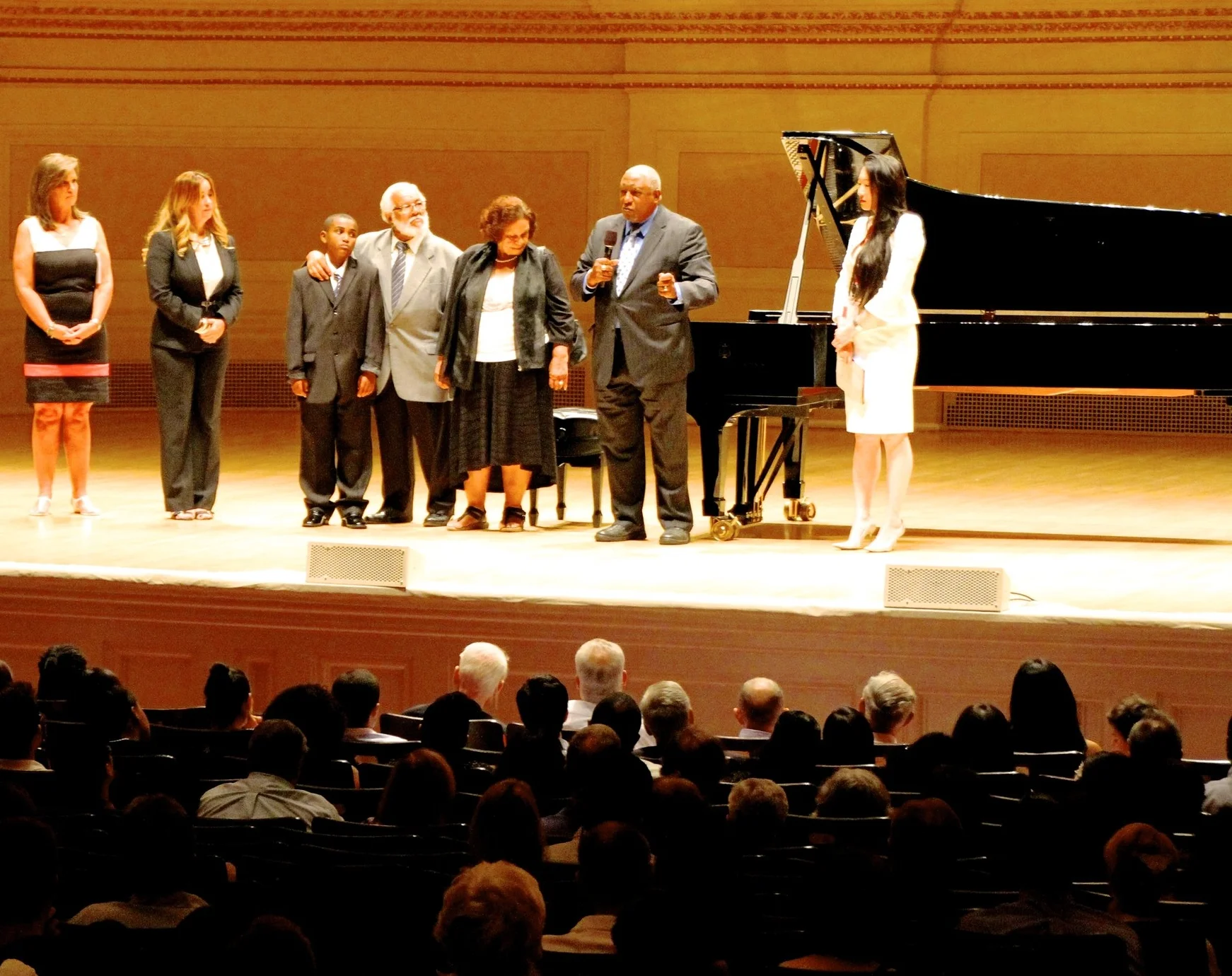““It is particularly important to raise the question of tuning in connection with bel canto technique, since today’s high tuning misplaces all register shifts, and makes it very difficult for a singer to have the sound float above the breath. When an ‘F’-sharp becomes a ‘G’ ... everything is misplaced a half-step, and the technique fails.
I also like ... the hypothesis that instrumental music, too, is an imitation, a derivative, of vocal music. Also, instrumental music sounds false when played at a high tuning; the sound is as unnatural in instruments as in voices ... what is true for the voice, is also true for instruments.””
It was on April 8 of 1993 that the great operatic tenor Carlo Bergonzi, in conjunction with the Schiller Institute, conducted an exhaustive lecture/demonstration in New York City, to make the case for a "natural musical tuning" placed at middle "C" equal to 256 cycles per second, and an "A", therefore, located at an interval between "A" at 427 and "A" at 432 cycles per second. That demonstration was held here, at Carnegie Hall's Weill Recital Hall, and attracted vocal coaches, accompanists, musical theorists, teachers and students from the entirety of New York City's musical community.
One year earlier, in 1992, the Schiller Institute had published A Manual On The Rudiments Of Tuning and Registration, which, among other things, revived the knowledge of what, only a few decades earlier, had been widely recognized to be "physical" pitch, as opposed to what was commonly termed "International Pitch" – the latter being a convention, not a principle. In a 1931 work entitled Speech and Voice, with X-rays of English, French, German, Italian, Spanish, Soprano, Tenor, and Baritone Subjects, by Dr. G. Oscar Russell of Ohio University, the author stated: "D. C. Miller prefers the tempered scale, or so-called 'International Pitch’, where 'A'=435 And Middle 'C' =258.65; but Sir Richard Paget and other scientific investigators cited in this work, generally use the 'Physical' or 'Scientific' pitch where 'A'=430 and middle 'C'=256".
The United States Army Manual of 1944 reported: "Strike the note middle 'C' on any average well-tuned piano and it gives 256 vibrations per second. Likewise the middle 'C' tuning forks that are used in all physical laboratories are all tuned to 256 cycles per second. This gives the note 'A' 427 vibrations per second. The other notes of the scale vibrate according to a fixed ratio. ... International pitch differs slightly from that used by physicists since 'A' equals 435 vibrations per second on the International scale. With the pitch adopted by the American Federation of Musicians, 'A' has 440 vibrations per second. Sopranos find it difficult to sing music written by Handel and his contemporaries when accompanied by instruments tuned to the pitch adopted by the American Federation of Musicians (emphasis added).”
The arbitrary — or deliberate — shift from what was known to be the physical position of the location of middle "C", to another "convention" or "trend", cripples, if not ruins, the capacity of the vocalist to achieve the vocal transparency that is at the center of the conveying of meaning in music. By "transparency", we mean the ability of the multiply-connected voice species -- such as the soprano, bass, mezzo-soprano, tenor, baritone and alto voices -- through the advanced compositional methods employed by "Handel and his contemporaries and descendants", to advance the meaning of a text with far greater precision than the written or spoken text could ever provide. (It was Felix Mendelssohn who had observed that words were far too imprecise with respect to meaning, unlike music, which was able to state meaning with far greater exactitude.)
The mission of the Foundation for the Revival Of Classical Culture is to champion those principles and methods of composition and performance that exemplify universal culture, methods that best assist the widest possible number of the world's citizens to participate in the greatest musical and artistic ideas in the history of humanity, no matter what the culture of their origin. To that end, the Foundation attempts to present challenging programs that seek to shift the audience away from a "spectator" role, to that of "performers"--active participants in a crucial experiment. Therefore the Foundation has collaborated with various organizations and teachers in an initiative to build a new Classical music audience in New York City, through the creation of a 1,000-1500 member citywide chorus.



